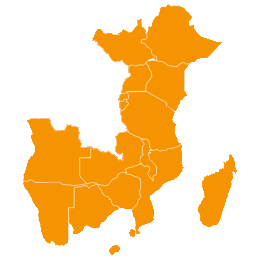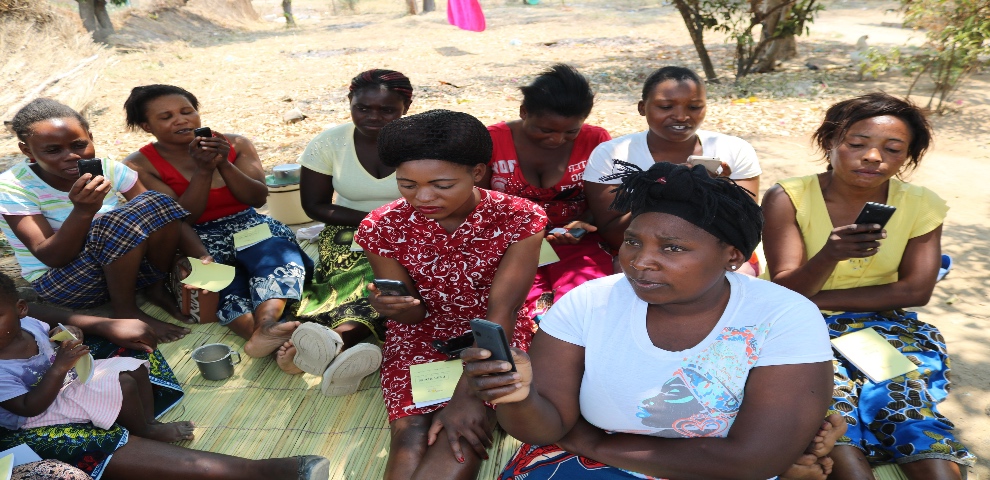Digital finance
“The advantage of mobile money is that no one knows that I have money as it is safe in my mobile phone. If I need cash it is easy to get to a mobile money services booth and make a cash withdrawal. Loan repayments to Microloan Foundation are also done through mobile money which is fast and efficient”
Emma Banda, Walela Centre Groups ChairladyBACKGROUND
The loss of savings by community-based financial institutions due to fire or theft has reduced members’ trust. To ensure safety, the RUFEP programme has established formal links between the CBFIs and formal FSPs though digital platforms.
WHAT’S INVOLVED
Linkage between CBFIs and FSPs: By creating formal relations between rural finance groups and financial services, rural savings can be securely and safely stored and accessed.
Digital finance services: Mobile money services allow users to deposit and withdraw money, receive and pay loans, track their spending and more.
EXPLORE THIS SOLUTION
Digital finance services can offer:
- Safety and security for money management in rural areas.
- Financial inclusion which facilitate access and use money by rural communities.

Countries involved
Zambia
Project partners
Bank of Zambia Development Bank of Zambia SaveNet Association of Microfinance Institutions of Zambia(AMIZ) Financial Sector Deepening Zambia(FSDZ) University of Mannheim
Project dates
2014 – 2023
Share this solution
Bookmark this solution
BookmarkShow Full Solution
Summary
The Rural Finance Expansion Programme (RUFEP) aims to increase access to and use of sustainable financial services by poor rural men, women and youth. The programme relies on digital platforms to link community-based financial institutions (CBFIs) to formal Financial Service Providers (FSPs). Since its inception in 2014, the programme has directly or indirectly benefitted nearly one million people.
Challenge/Problem
CBFIs provide financial services to rural people, who are often otherwise financially excluded. Traditionally, CBFI operations include: (i) mobilizing savings of CBFI group members, (ii) making loans to group members from the accumulated savings and (iii) holding surplus cash savings in a safe location. However, the risk of losing group savings through fire or theft reduces trust in the CBFI. To mitigate this risk, the Rural Finance Expansion Programme (RUFEP) in Zambia uses mobile money services to link CBFIs with formal FSPs so they can safely deposit surplus savings.
Solution
RUFEP establishes operational links between CBFIs and formal FSPs, including banks and building societies. To promote these linkages, RUFEP partners with organizations that promote CBFI development using different models, such as solidarity groups, savings and internal lending communities and village savings and loan associations.
Field officers and private service providers build CBFIs’ capacity and assist them in formally registering with relevant authorities so that they can open bank accounts. In rural areas with limited access to formal FSPs, RUFEP promotes mobile banking and mobile money to increase access to financial services. For example, in the eastern and southern provinces of Zambia, RUFEP partners with MicroLoan Foundation to support women’s solidarity groups in accessing loans using mobile money. Working with MicroLoan, all women’s solidarity group members access their loans through mobile phones.
Loan disbursements all take place through mobile money. Linking rural savings groups to formal financial institutions helps keep the groups’ savings secure while also improving their members’ access to formal financial services, including credit, loans and insurance.
Through capacity-building, poor community members have learned how to save and access loans to embark on income-generating activities and increase their household incomes throughout the year.
Results
Over 100 CBFIs were formally registered and linked to FSPs under this innovation. Linked savings groups are no longer exposed to the risks of fire and theft, as group savings are now safely held in banks. The security brought by the innovation has led to more rural men, women and youth joining CBFIs, which has helped them to improve their livelihoods by increasing household incomes.
Apart from improving social cohesion and solidarity in rural communities that have embraced CBFIs, savings groups have also reduced household poverty through improved livelihoods. With the savings and loans accessed through the CBFIs, members have been able to send their children to school, improve their nutrition and upgrade their housing from grass-thatched to iron-sheeted.
CBFIs have made communities more resilient to climate change, as they are no longer dependent on farming or agriculture as their only source of income. Their sources of income have been diversified through other income-generating activities throughout the year.
Lessons Learned/Potential for replication
Traditional FSP products and services may not be entirely appropriate for CBFIs. When made aware of CBFIs’ needs, FSPs are able to develop responsive products and services.
Linkages between CBFIs and FSPs can increase costs for the CBFIs in terms of transport to deposit and withdraw money. This challenge can be managed by ensuring the benefits outweigh the costs.
Rural people’s access to mobile banking and mobile money is constrained by poor network services. Network operators will need to improve their services and coverage in rural areas in order to leverage the potential of mobile phones and increase rural financial inclusion.
For the innovation to meet the needs of rural areas, CBFIs’ saving cycles need to be understood. The risk of keeping money in boxes tends to be higher near the sharing periods as a large part of the finances is loaned out to group members during the savings cycle.
Next Steps
To promote the sustainability of this innovation, emerging good practices must be documented and disseminated on both the supply and the demand side. FSPs must provide information on how successful groups are performing and, to avoid mistrust and concerns about hidden charges, they need to ensure clarity on the terms and conditions of the products and services they offer for CBFIs.
CBFIs need to help FSPs understand their models, savings cycles and investment needs so that FSPs can develop products and services that meet their specific needs.
Last update: 22/07/2021


